Barefoot Pioneers: the People Who Taught Us "Barefoot is Best"
The Moc3 Barefoot Running "Sock"
Yes, we're a shoe company, but we're a shoe company that believes barefoot is best. We think your bare feet are already the perfect design for walking and running and any shoes that inhibit their natural function with "motion control technology" will only hold you back. We also understand that there are times when you may need shoes, either because businesses require them, because you want more protection or simply because you want the look and style that shoes provide. That's why our shoes are designed to be as simple and barefoot-like as possible, allowing your foot to flex, bend and function naturally.
The idea of "barefoot is best" hasn't always been acceptable. For many decades, or even centuries, modern cultures have shunned the idea of going unshod. Some people considered fancy, constrictive shoes to be a sign of class while others simply believe your feet will be injured unless you have the thickest and most expensive footwear you can find. We disagree, and fortunately for us, so do many others.
The barefoot running and minimalist shoe movement has skyrocketed in recent years. Although controversial studies continue to emerge, it's becoming more apparent every day that barefoot lifestyles are more than just a passing trend. We hear regularly from customers who have cured their foot pain by throwing away their orthotics and supportive shoes in favor of bare feet or a thin pair of RunAmocs (myself included). All of us at Soft Star are very grateful to the barefoot pioneers who stood up against popular opinion to show the world that natural foot function should be encouraged, not altered.
We'd like to recognize a few of those pioneers and the contributions they made to barefoot living, in no particular order:
Simon J. Wikler D.S.C.
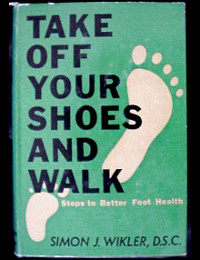 In the 1960s, Dr. Wikler stood up against his colleagues who insisted that foot problems were incurable chronic conditions, and that any effort to pursue a cure or identify the cause of foot pain was futile. Dr. Wikler observed on his own that people who lived barefoot lifestyles didn't suffer from the foot maladies that were common among his patients and he started to wonder if modern shoes could be at the root of the problem. He tried treating foot pain with strengthening exercises, barefoot activity and less-constricting shoes and began to see results. In 1961, Wikler released the book Take Off Your Shoes and Walk, which explained his theories about how fashionable shoes were crippling our feet and provided suggestions for restoring and promoting natural foot function. He focused primarily on children's feet and offered a very simple cure for fallen arches in kids: take off their shoes. Although his book is now out of print, you can read a fair-use excerpt of it at unshod.org.
In the 1960s, Dr. Wikler stood up against his colleagues who insisted that foot problems were incurable chronic conditions, and that any effort to pursue a cure or identify the cause of foot pain was futile. Dr. Wikler observed on his own that people who lived barefoot lifestyles didn't suffer from the foot maladies that were common among his patients and he started to wonder if modern shoes could be at the root of the problem. He tried treating foot pain with strengthening exercises, barefoot activity and less-constricting shoes and began to see results. In 1961, Wikler released the book Take Off Your Shoes and Walk, which explained his theories about how fashionable shoes were crippling our feet and provided suggestions for restoring and promoting natural foot function. He focused primarily on children's feet and offered a very simple cure for fallen arches in kids: take off their shoes. Although his book is now out of print, you can read a fair-use excerpt of it at unshod.org.
Christopher McDougall
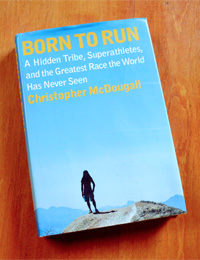 Now a household name for barefoot runners, Christopher McDougall introduced the idea of minimalist running to mainstream audiences through his 2009 bestseller Born to Run. The book chronicles McDougall's own experiences in a captivating story that makes most readers want to throw away their shoes and run an ultramarathon before they even reach the last chapter. After three top podiatrists told McDougall he'd never be able to run without pain (because "humans weren't built for running"), he went on his own quest to find a reclusive tribe of superathletes called the Tarahumara who reportedly ran hundreds of miles every day without injury. McDougall consulted top runners, doctors and anthropologists and wandered into the territory of drug cartels in a harsh dessert to learn that humans were, in fact, born to run. Although McDougall wasn't the first to learn that less shoe is best, he did share with the world his discovery that simple changes in form and footwear could turn running from a painful torture into a euphoric human experience.
Now a household name for barefoot runners, Christopher McDougall introduced the idea of minimalist running to mainstream audiences through his 2009 bestseller Born to Run. The book chronicles McDougall's own experiences in a captivating story that makes most readers want to throw away their shoes and run an ultramarathon before they even reach the last chapter. After three top podiatrists told McDougall he'd never be able to run without pain (because "humans weren't built for running"), he went on his own quest to find a reclusive tribe of superathletes called the Tarahumara who reportedly ran hundreds of miles every day without injury. McDougall consulted top runners, doctors and anthropologists and wandered into the territory of drug cartels in a harsh dessert to learn that humans were, in fact, born to run. Although McDougall wasn't the first to learn that less shoe is best, he did share with the world his discovery that simple changes in form and footwear could turn running from a painful torture into a euphoric human experience.
Barefoot Ken Bob
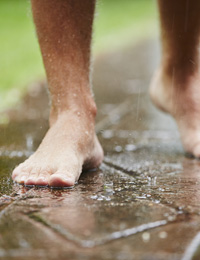 Ken Bob Saxton claims to be the world's guru of barefoot running, and for good reason: he's been doing it since 1987, long before the idea went mainstream. Although tribal cultures have been running without shoes for thousands of years, Ken Bob is one of the very few Americans who has been teaching it to modern western society for the past three decades. He first threw away his shoes after frustration with blisters led him to conclude that if he couldn't run barefoot then he shouldn't run at all. He has since finished nearly 80 marathons barefoot, including several entries into the Boston Marathon and a marathon-a-month challenge in 2004. Ken Bob has a passion for sharing his joy of running and has taught thousands of people the benefits of running barefoot through free workshops and free resources on his website barefootrunning.com. In 2011, he shared his knowledge and experience through the release of his book Barefoot Running Step by Step.
Ken Bob Saxton claims to be the world's guru of barefoot running, and for good reason: he's been doing it since 1987, long before the idea went mainstream. Although tribal cultures have been running without shoes for thousands of years, Ken Bob is one of the very few Americans who has been teaching it to modern western society for the past three decades. He first threw away his shoes after frustration with blisters led him to conclude that if he couldn't run barefoot then he shouldn't run at all. He has since finished nearly 80 marathons barefoot, including several entries into the Boston Marathon and a marathon-a-month challenge in 2004. Ken Bob has a passion for sharing his joy of running and has taught thousands of people the benefits of running barefoot through free workshops and free resources on his website barefootrunning.com. In 2011, he shared his knowledge and experience through the release of his book Barefoot Running Step by Step.
Dr. Lieberman, the Barefoot Professor

Barefoot Ted

Michael Sandler

On a side note, their newest book, Barefoot Walking, was released just a few days ago. Stay tuned for a review!
There you have it, a glimpse of some of the people who taught us how to run and walk naturally and without injury. There are several other barefoot pioneers we unfortunately didn't have room to list here, but if you think anyone else deserves mention then we encourage you to let us know in the comments below.
Of course, we think honorable mention should be given to our founder, Tim Oliver. Tim has been making barefoot shoes since 1984. He and his wife Jeannie started Soft Star Shoes in their garage, then converted an old school bus into the first "official" Soft Star workshop. Now, nearly 30 years later, Tim is still making shoes every day. Although the company began with only minimal footwear for children, Soft Star's product line now includes dozens of handcrafted moccasins, boots, outdoor shoes and our popular RunAmoc athletic shoes for babies, kids and adults (well, you're not going to find RunAmocs for babies, but everything else applies). And every single one of our shoes is designed to allow your feet to move and function naturally.
Soft Star founder Tim Oliver, making shoes for 29 years... and counting!
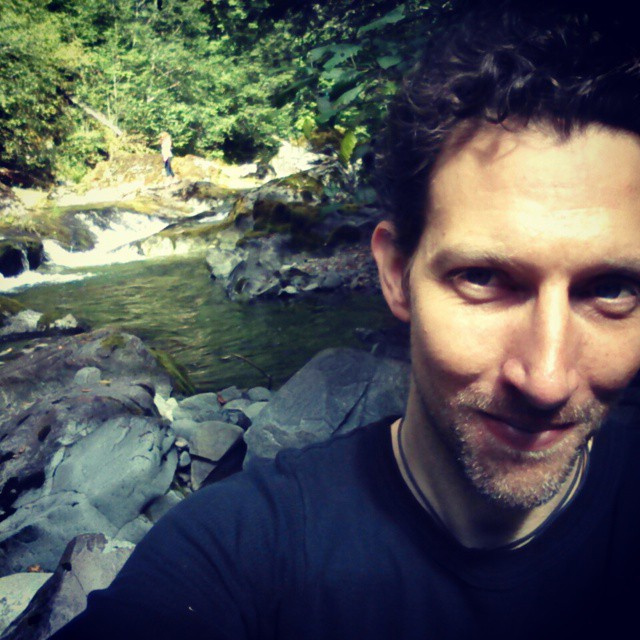
Martin is a lifelong runner who began wearing minimalist shoes over 10 years ago when he found they alleviated his chronic foot pain, which eventually disappeared completely. He further studied proper running form through a series of workshops taught by Correct Toes inventor, Dr. Ray McClanahan DPM. Martin has collaborated with several health care professionals to collect and share peer-reviewed studies that show the benefits of minimalist footwear. In his personal life, Martin loves living in the Pacific Northwest because it allows him to enjoy a variety of outdoor activities year-round, including hiking, cycling, rock climbing, surfing and snowboarding.

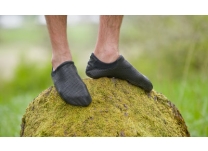
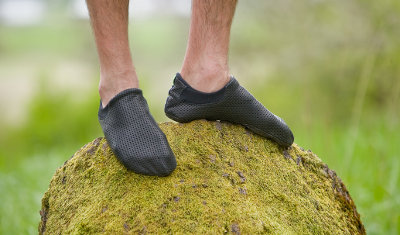


5 Comments
3 Product(s)